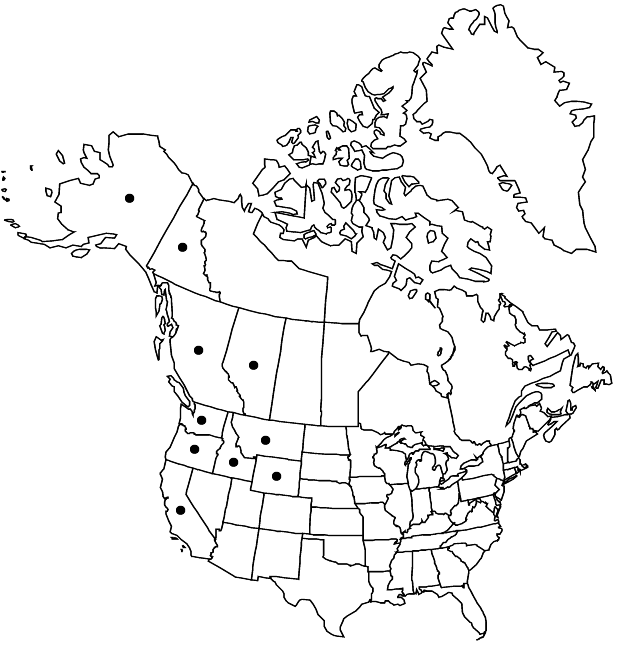Menziesia ferruginea
Pl. Icon. Ined. 3: plate 56. 1791 ,.
Shrubs erect, branching, often forming thickets, 1–2.5 m, malodorous when bruised, bark of older branches loosely shredding or glabrous, young twigs finely hairy or somewhat glandular-pilose. Leaves: petiole 2–4 mm; blade light green abaxially, oblong-elliptic to obovate or ovate-elliptic to elliptic-obovate, 3–6 cm, base cuneate, margins glandular-ciliate, apex acute or rounded with mucronate tip ca. 0.1–0.2 mm, tapering to petiole, abaxial surface stipitate-glandular and/or hairy, midvein scales lanceolate-glandular, not cleft or, rarely, 2-cleft, adaxial surface pilose and/or sparsely stipitate-glandular. Pedicels spreading to drooping, spreading to erect in fruit, filiform, 1–3 cm, stipitate-glandular with ± minute pilose hairs. Flowers appearing with leaves; calyx lobes broadly triangular, 0.5–1 mm, margins lacerate-ciliate, apex rounded to subacute, stipitate-glandular; corolla greenish or yellowish tinged with red or bronze, 6–10 × 5 mm, lobes 1.5 mm; nectariferous disc obscurely 8-crenate; filaments subulate, flattish, slightly dilated proximally, hairy near base; anthers linear; ovary globose, glandular but not hairy. Capsules ovoid to ovoid-oblong, 5–8 mm, glabrous or very sparsely stipitate-glandular and/or puberulent. Seeds pale brown, linear, 2.5–3 mm including 2 appendages 1 mm each. 2n = 26.
Phenology: Flowering May–Jul.
Habitat: Moist, shady woods and stream banks in lowland, montane, and subalpine zones
Elevation: 700-1900 m
Distribution

Alta., B.C., Yukon, Alaska, Calif., Idaho, Mont., Oreg., Wash., Wyo.
Discussion
Menziesia ferruginea is prized as an ornamental, especially because of its autumn coloration. The common name false azalea refers to its habit, in particular the leaves, which bear some resemblance to those of azalea. Native peoples from coastal regions used the leaves and twigs for medicinal, structural, and other purposes. Poisonings due to the andromedotoxins in the leaves have been reported in livestock and humans. NatureServe lists M. ferruginea as secure or apparently secure in most of its range but critically imperiled in Wyoming. There is an unvouchered report in the literature for Minnesota.
Two infraspecific taxa have been recognized and are still in use in some floras. Neither chemical (B. A. Bohm et al. 1984) nor morphological (J. C. Hickman and M. P. Johnson 1969) analyses have unequivocally supported the recognition of these infraspecific taxa. Character differences between var. ferruginea of coastal areas and the Cascade Mountains and var. glabella of the Rocky Mountains are most noticeable between specimens from the extremes of their ranges. Heterogeneity in character states is seen throughout the geographic range of Menziesia ferruginea and intermediate specimens are noticeable, particularly in the more southerly Cascade portion of the range.
Selected References
None.
